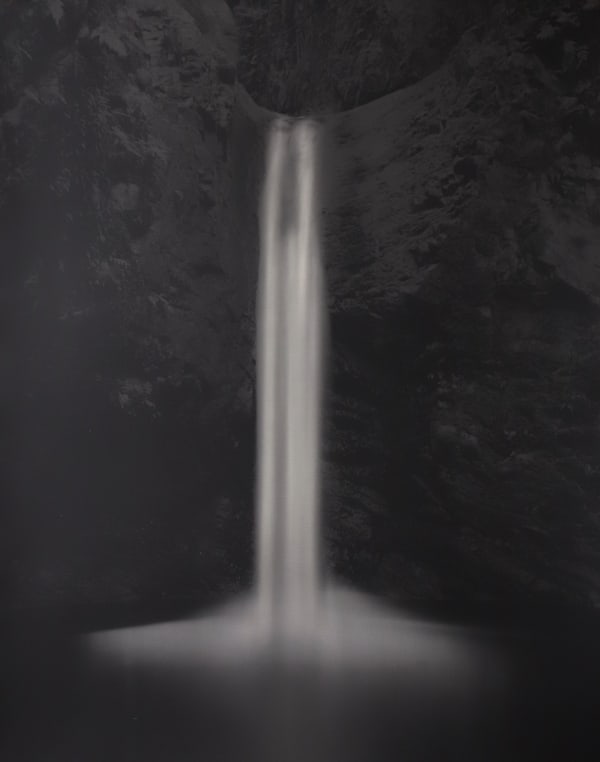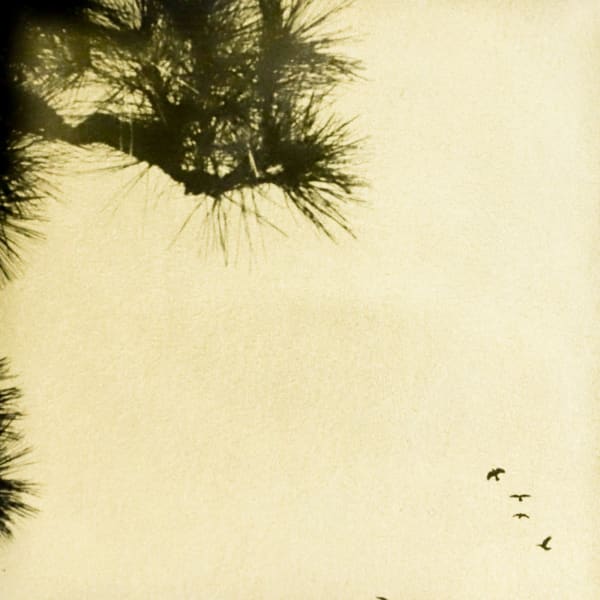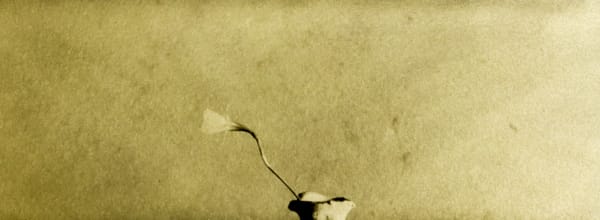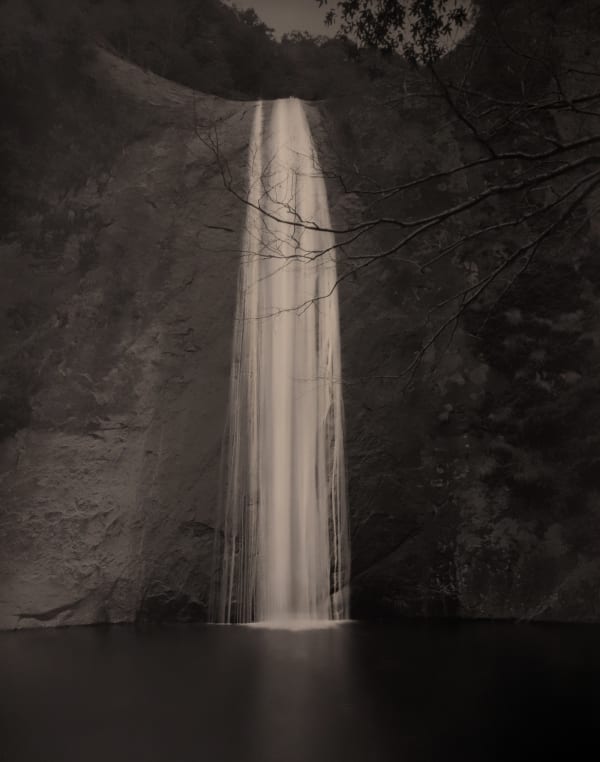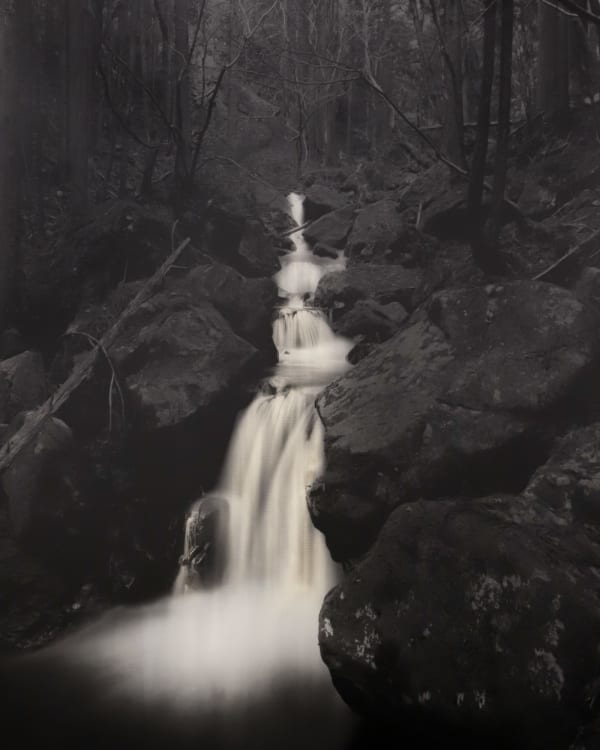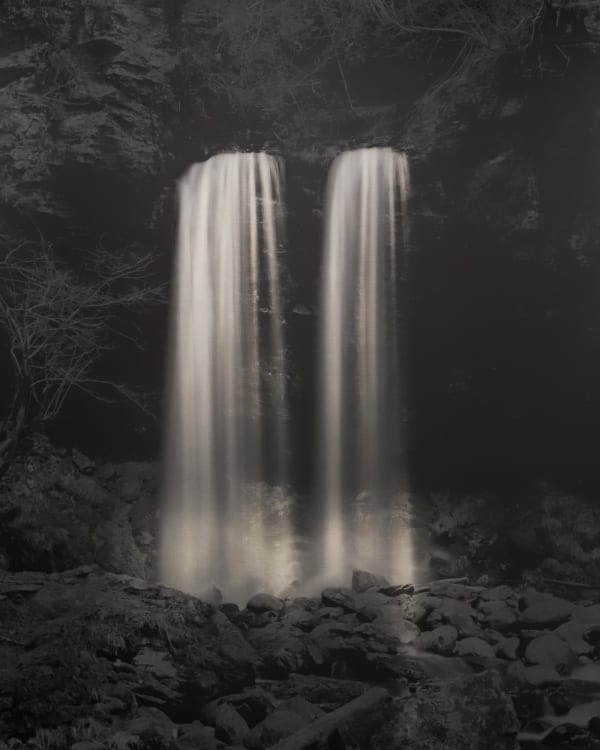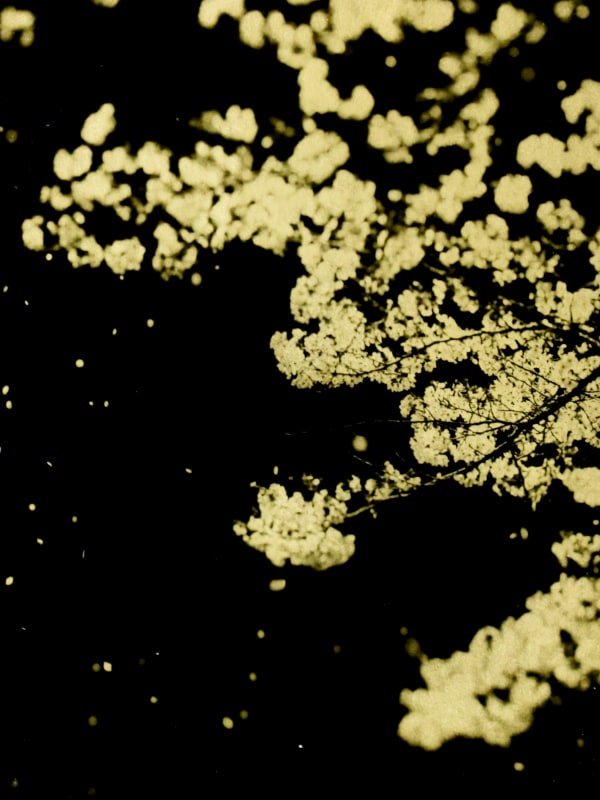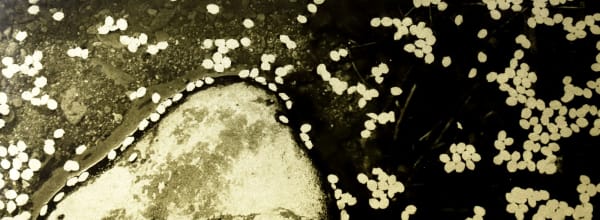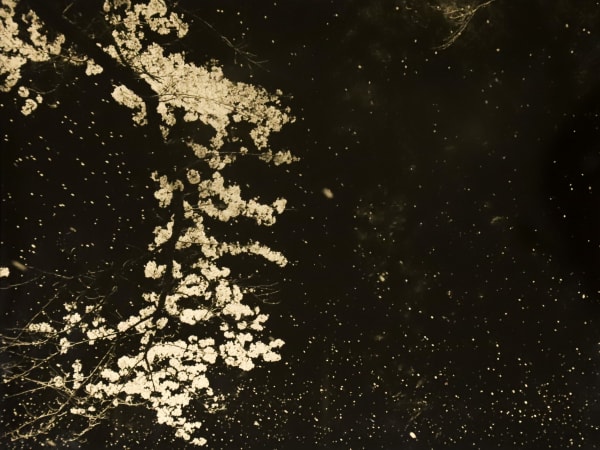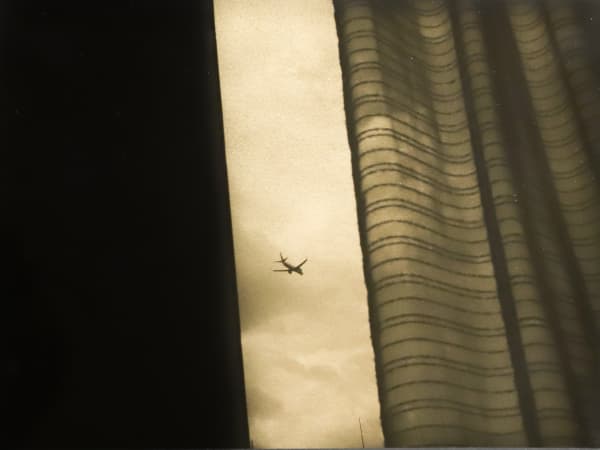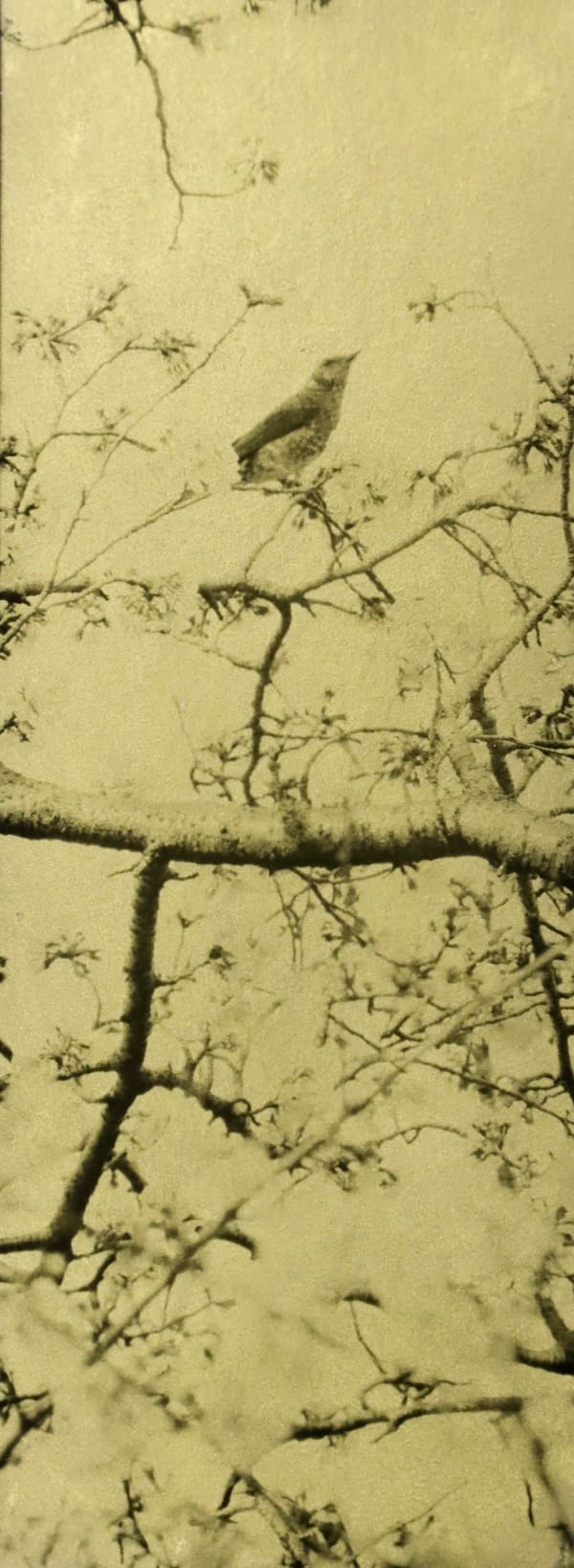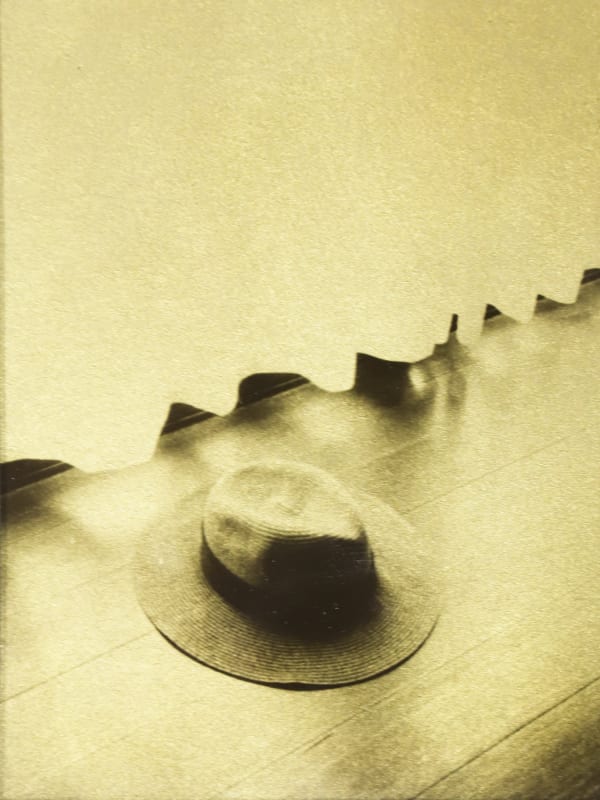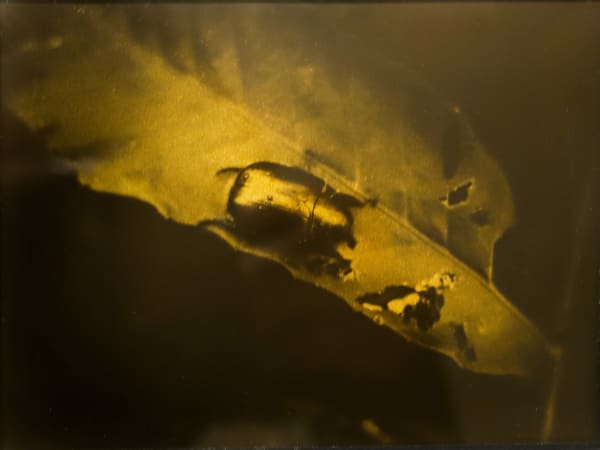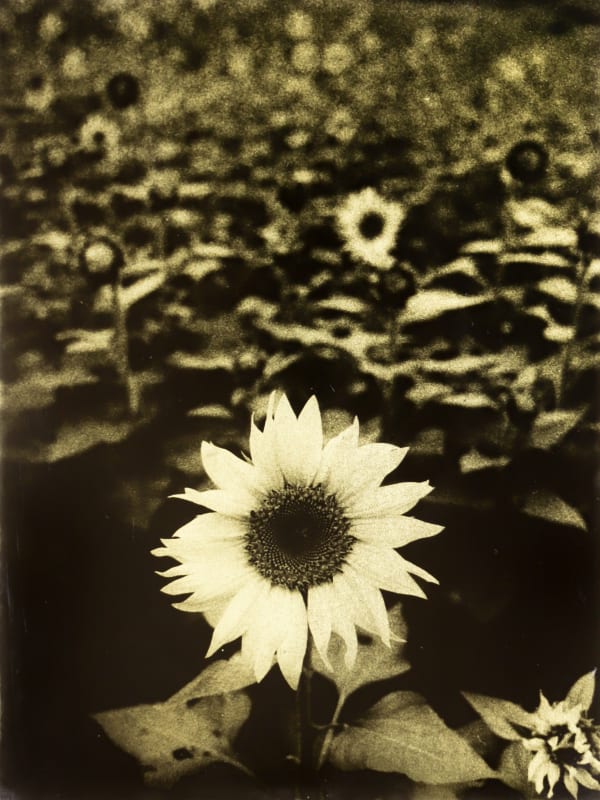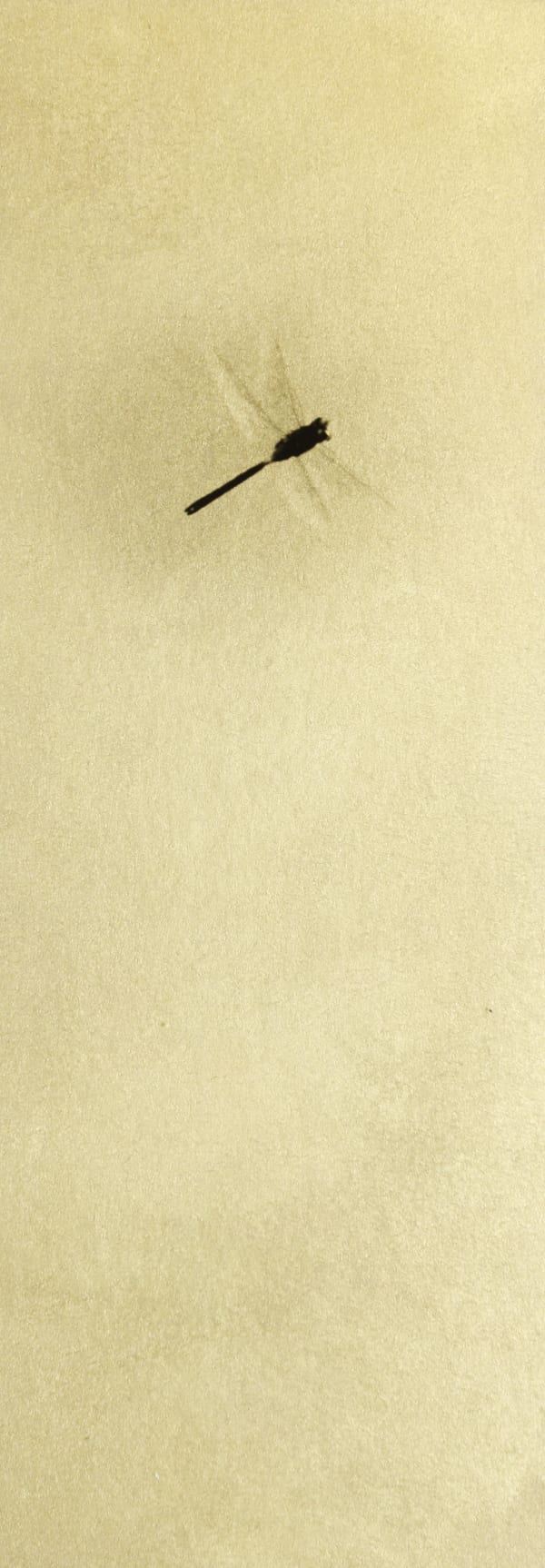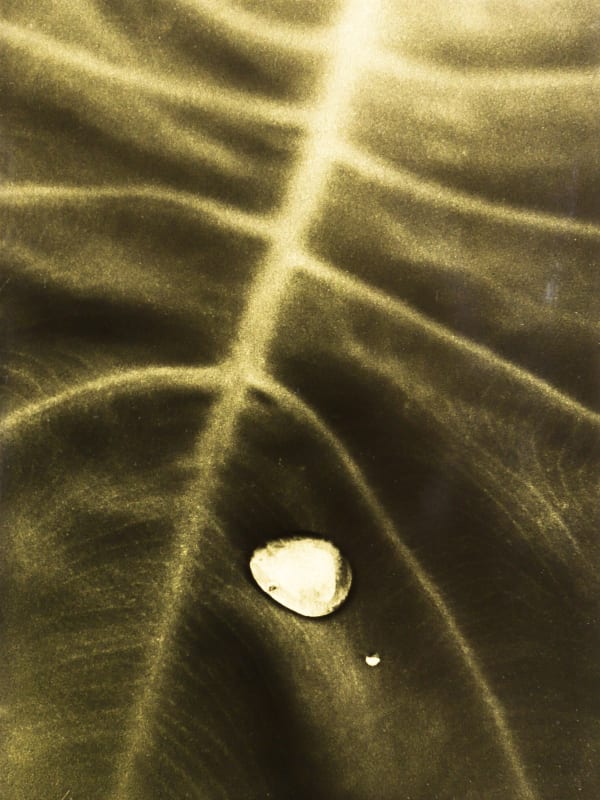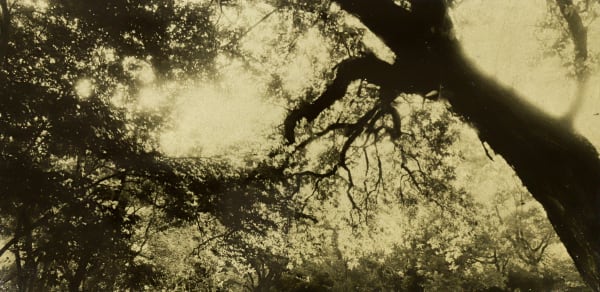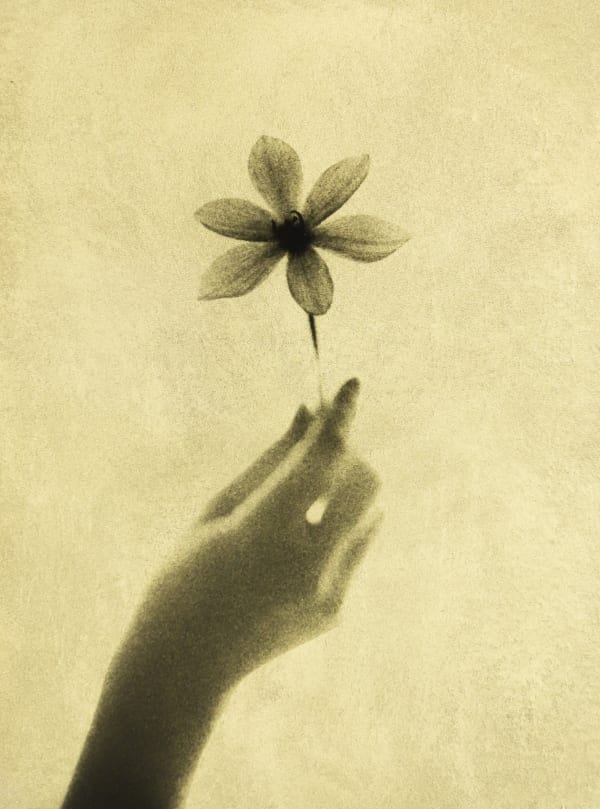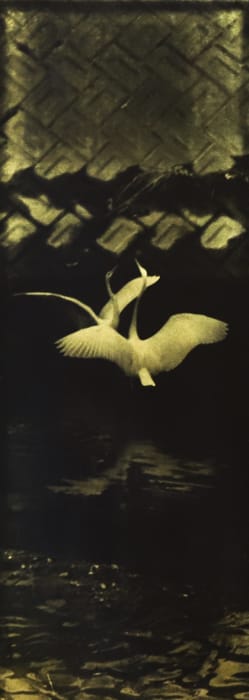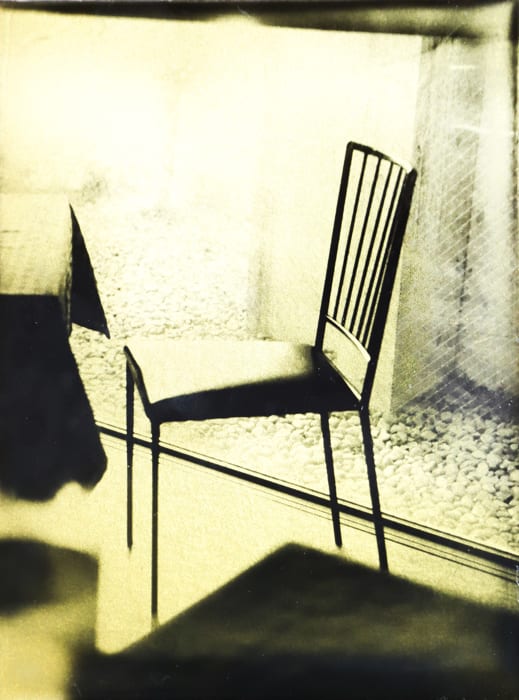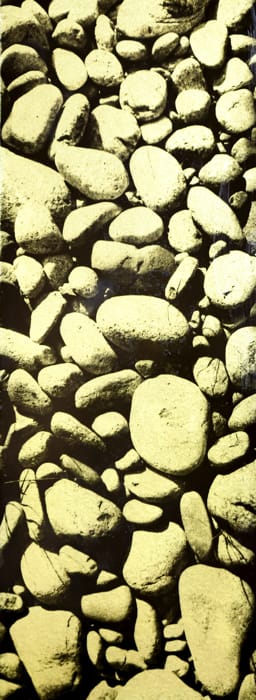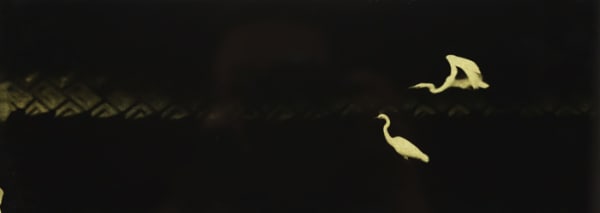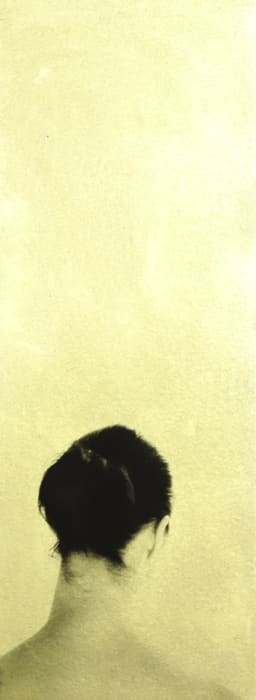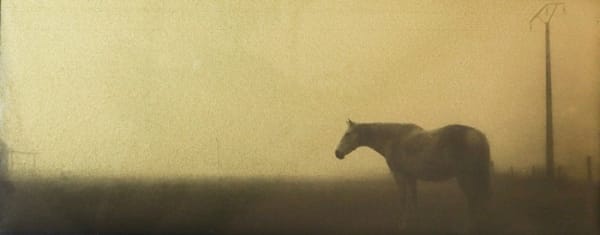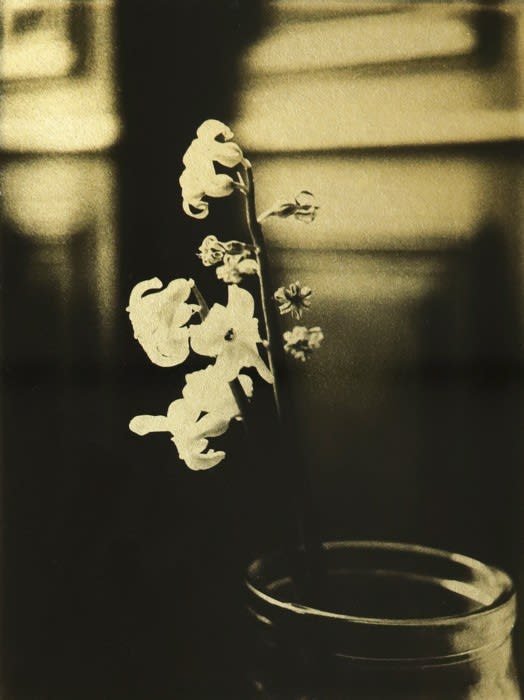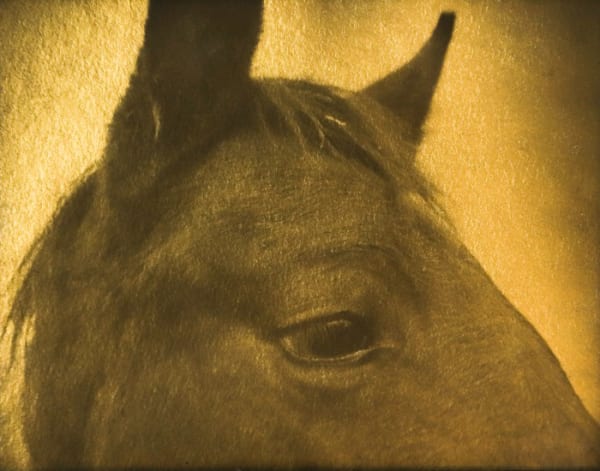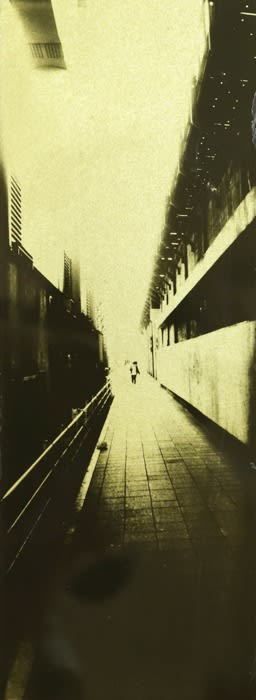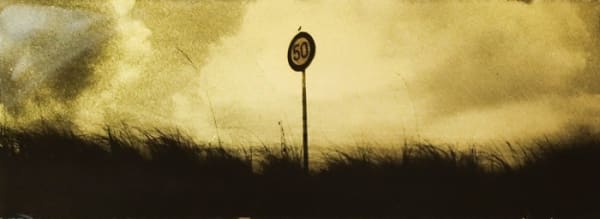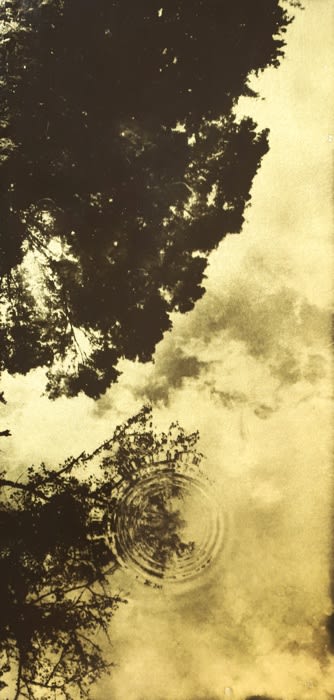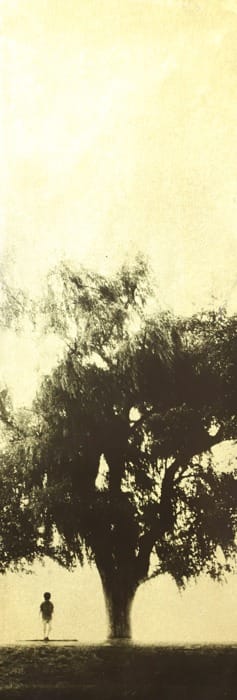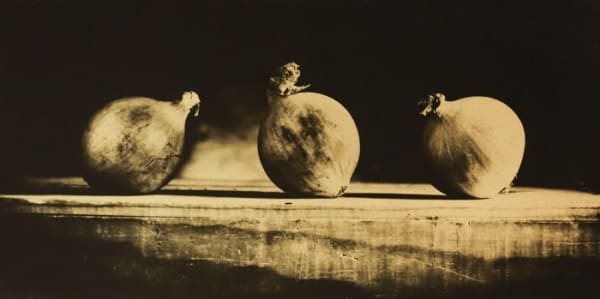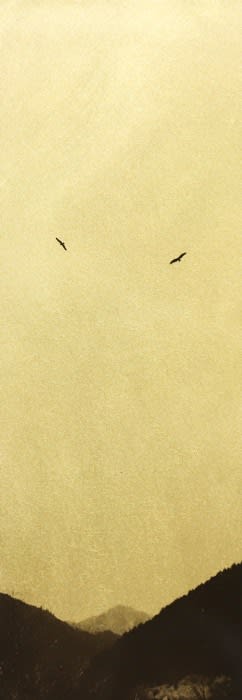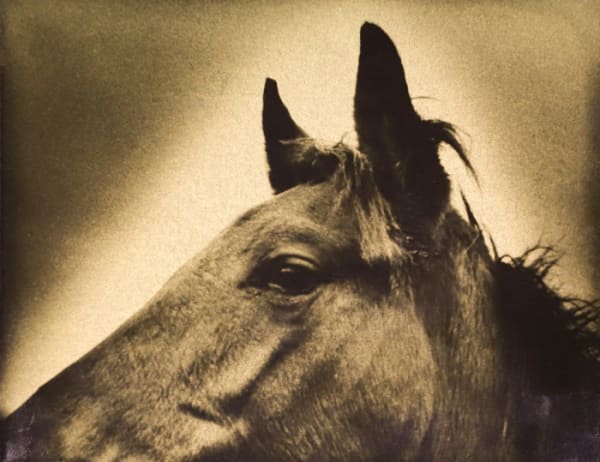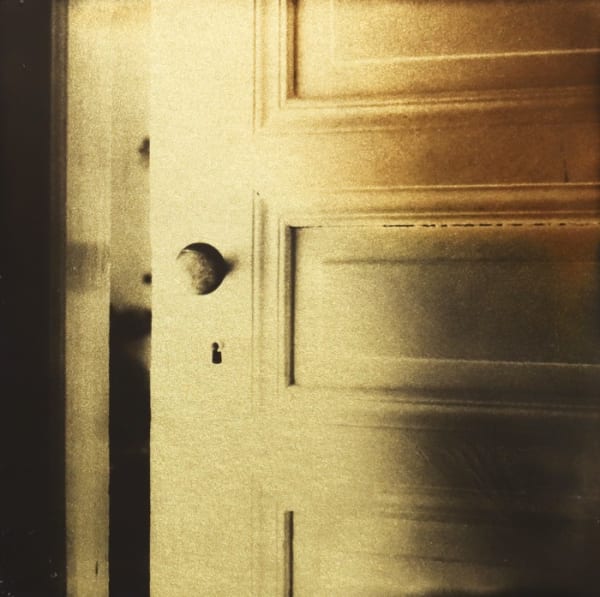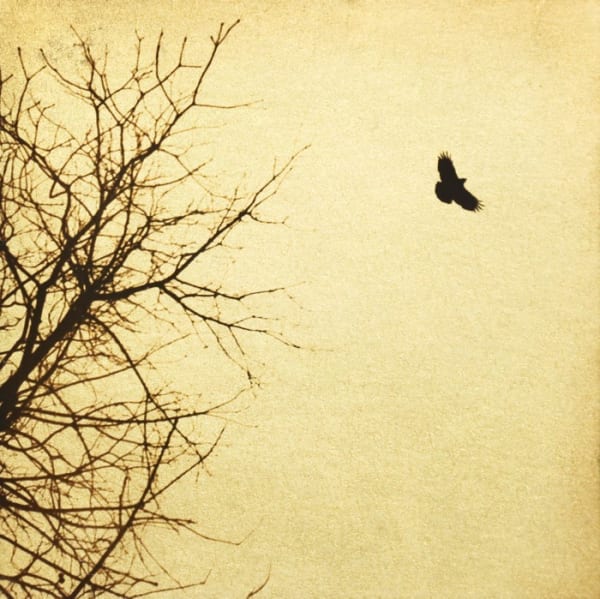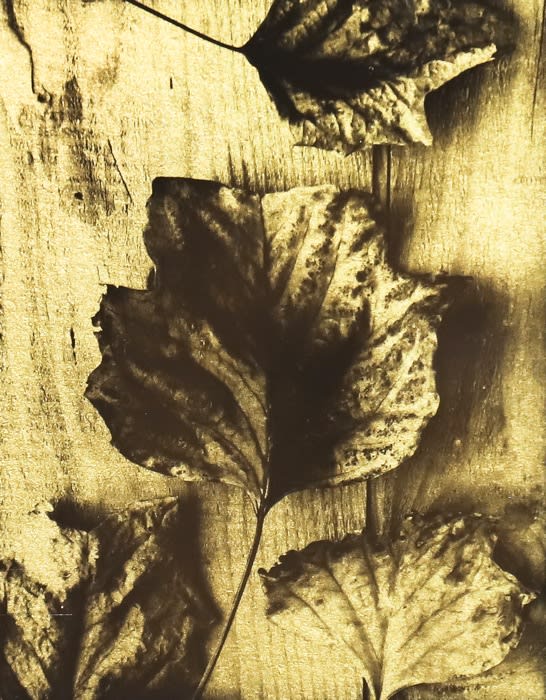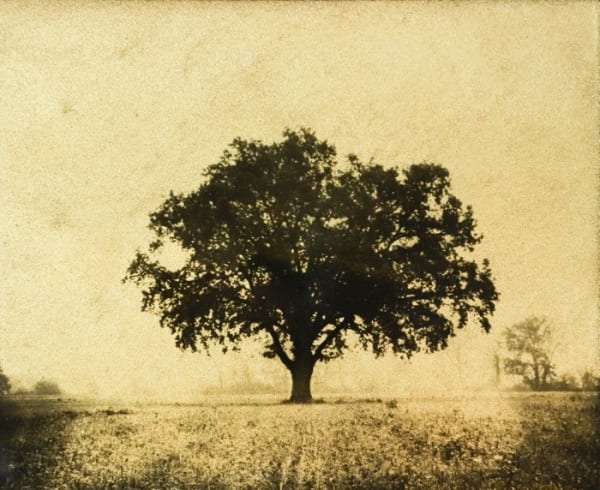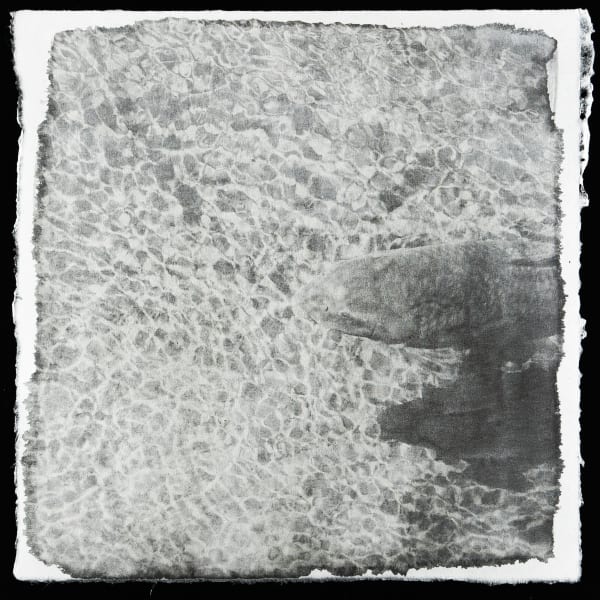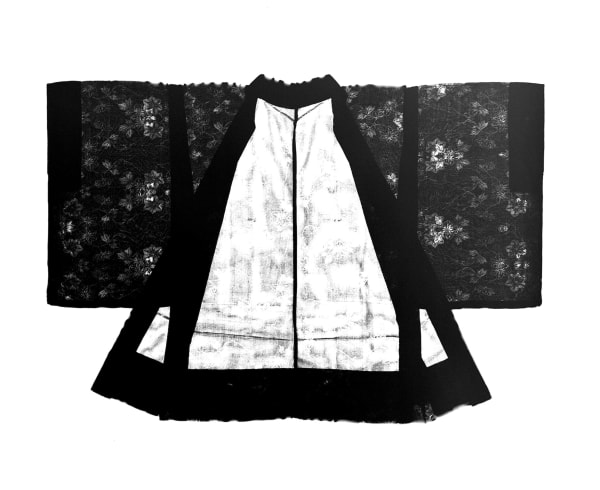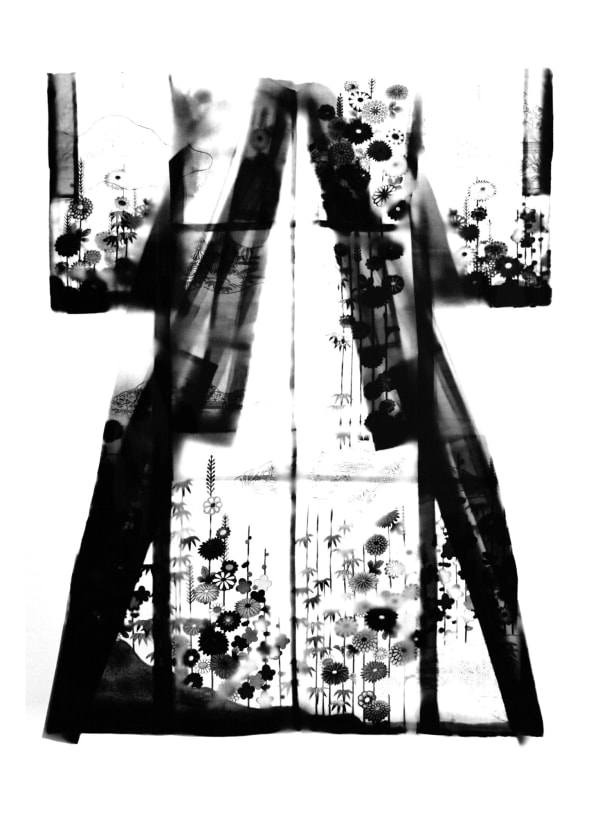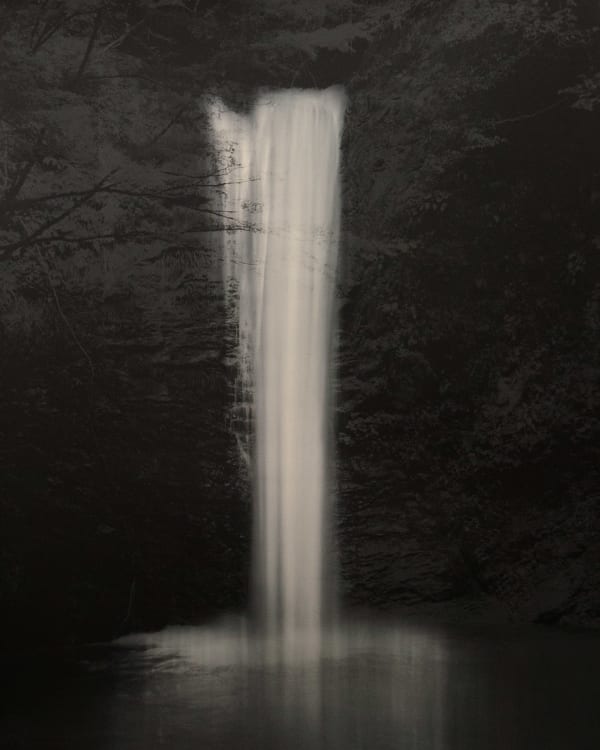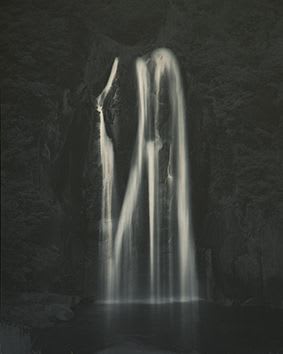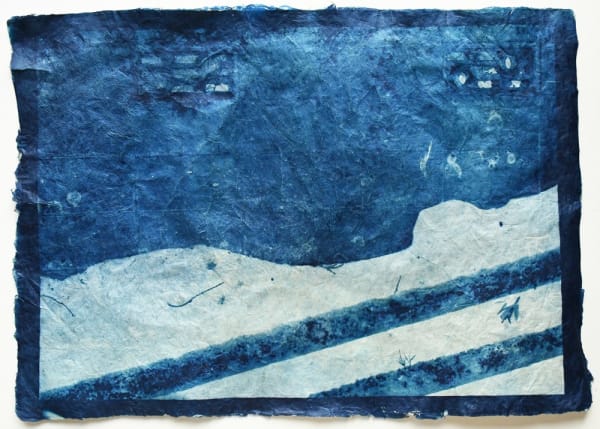Naohiro Ninomiya
'Perfectly Imperfect': Ninomiya Naohiro (1969)
Ninomiya Naohiro moved from Japan to France in 1988, but maintains a very close relationship with his native country, its culture and philosophies.
Ninomiya’s work ‘Taki’ is influenced by a 13th century Japanese painting entitled “Painting of Nachi waterfall” which, for centuries, was believed to incarnate divinity. ‘The first time I saw this painting, I saw nothing more than an elegant brushstroke on a dark background. Only after did I discover all the details and depth it contained.’ This first impression has been enshrined in Ninomiya’s images of waterfalls. With ‘Taki’ he pays tribute to these ‘places of mystery where I feel an indescribable, inhuman presence that both frightens and intrigues me’. Flowing water also represents the constant change and passage of time in nature and life.
Water is also the habitat of the carps that are the subject of Ninomiya’s series ‘Nokomi’, which means ‘carp going upstream to lay eggs in Spring’. Ninomiya used to live next to a little stream, where he used to hear the sound of the carp splashing in the water. For Ninomiya this was a sign of strength. When he returned to his ancestral house a few years ago, he again heard the sound of the carp after a long absence: ‘I felt the kind of strength andfriendship between me and them, the carp, because the carp keeps going upstream, like me. I feel the same as artist. No matter what has happened, I must continue. It is the same. So, I decided to make something with carp and I began searching for the most appropriate material for this work. My native region Gifu, it’s famous for the handmade paper and the water used to make this paper, it comes from the same source of the stream passing by my house. So finally I decided to let this carp swim in the same water where it comes from.’
Ninomiya decided to fixate the nokomi on handmade washi paper. The images of the carps have irregular edges that signify the constant movement in the water and in the universe.
-
 Nokomi-29, 2023
Nokomi-29, 2023 -
 Nokomi-28, 2023
Nokomi-28, 2023 -
 Nokomi-27, 2023
Nokomi-27, 2023 -
 Nokomi-27, 2023
Nokomi-27, 2023 -
 Nagare-5, 2023
Nagare-5, 2023 -
 Nagare-4, 2023
Nagare-4, 2023 -
 Nagare-1, 2023
Nagare-1, 2023 -
 Kamagataki, 2023
Kamagataki, 2023 -
 Glanage-85, 2023
Glanage-85, 2023 -
 Glanage-80, 2023
Glanage-80, 2023 -
 Glanage-79, 2023
Glanage-79, 2023 -
 Glanage-76, 2023
Glanage-76, 2023 -
 Glanage-74, 2023
Glanage-74, 2023 -
 Glanage-73, 2023
Glanage-73, 2023 -
 Glanage-72, 2023
Glanage-72, 2023 -
 Glanage-71, 2023
Glanage-71, 2023 -
 Glanage-69, 2023
Glanage-69, 2023 -
 Glanage-68, 2023
Glanage-68, 2023 -
 Glanage-67, 2023
Glanage-67, 2023 -
 Glanage-65, 2023
Glanage-65, 2023 -
 Fudou-no-taki, 2023
Fudou-no-taki, 2023 -
 Nunobiki-no-taki, 2022
Nunobiki-no-taki, 2022 -
 Nunobiki-no-taki, 2022
Nunobiki-no-taki, 2022 -
 Nokomi-24, 2022
Nokomi-24, 2022 -
 Nokomi-24, 2022
Nokomi-24, 2022 -
 Nokomi-23, 2022
Nokomi-23, 2022 -
 Nokomi-23, 2022
Nokomi-23, 2022 -
 Nokomi-21, 2022
Nokomi-21, 2022 -
 Nokomi-20, 2022
Nokomi-20, 2022 -
 Nokomi-20, 2022
Nokomi-20, 2022 -
 Nokomi-20, 2022
Nokomi-20, 2022 -
 Nokomi-20, 2022
Nokomi-20, 2022 -
 Nokomi-19, 2022
Nokomi-19, 2022 -
 Nokomi-17, 2022
Nokomi-17, 2022 -
 Nokomi-17, 2022
Nokomi-17, 2022 -
 Nokomi-17, 2022
Nokomi-17, 2022 -
 Nokomi-13, 2022
Nokomi-13, 2022 -
 Nokomi-11, 2022
Nokomi-11, 2022 -
 Nanashi-no-taki, 2022
Nanashi-no-taki, 2022 -
 Meototaki, 2022
Meototaki, 2022 -
 Meototaki, 2022
Meototaki, 2022 -
 Glanage-66, 2022
Glanage-66, 2022 -
 Glanage-64, 2022
Glanage-64, 2022 -
 Glanage-63, 2022
Glanage-63, 2022 -
 Glanage-62, 2022
Glanage-62, 2022 -
 Glanage-61, 2022
Glanage-61, 2022 -
 Glanage-60, 2022
Glanage-60, 2022 -
 Glanage-59, 2022
Glanage-59, 2022 -
 Glanage-58, 2022
Glanage-58, 2022 -
 Glanage-57, 2022
Glanage-57, 2022 -
 Glanage-56, 2022
Glanage-56, 2022 -
 Glanage-88, 2021
Glanage-88, 2021 -
 Glanage-87, 2021
Glanage-87, 2021 -
 Glanage-86, 2021
Glanage-86, 2021 -
 Glanage-84, 2021
Glanage-84, 2021 -
 Glanage-77, 2021
Glanage-77, 2021 -
 Glanage-55, 2021
Glanage-55, 2021 -
 Glanage-54, 2021
Glanage-54, 2021 -
 Glanage-53, 2021
Glanage-53, 2021 -
 Glanage-52, 2021
Glanage-52, 2021 -
 Glanage-50, 2021
Glanage-50, 2021 -
 Glanage-49, 2021
Glanage-49, 2021 -
 Glanage-48, 2021
Glanage-48, 2021 -
 Glanage-47, 2021
Glanage-47, 2021 -
 Glanage-46, 2021
Glanage-46, 2021 -
 Glanage-39, 2020
Glanage-39, 2020 -
 Glanage-38, 2020
Glanage-38, 2020 -
 Glanage-37, 2020
Glanage-37, 2020 -
 Glanage-35, 2020
Glanage-35, 2020 -
 Glanage-34, 2020
Glanage-34, 2020 -
 Glanage-33, 2020
Glanage-33, 2020 -
 Glanage-32, 2020
Glanage-32, 2020 -
 Nokomi-11, 2019
Nokomi-11, 2019 -
 Glanage-9, 2019
Glanage-9, 2019 -
 Glanage-82, 2019
Glanage-82, 2019 -
 Glanage-81, 2019
Glanage-81, 2019 -
 Glanage-8, 2019
Glanage-8, 2019 -
 Glanage-78, 2019
Glanage-78, 2019 -
 Glanage-7, 2019
Glanage-7, 2019 -
 Glanage-6, 2019
Glanage-6, 2019 -
 Glanage-5, 2019
Glanage-5, 2019 -
 Glanage-43, 2019
Glanage-43, 2019 -
 Glanage-42, 2019
Glanage-42, 2019 -
 Glanage-41, 2019
Glanage-41, 2019 -
 Glanage-4, 2019
Glanage-4, 2019 -
 Glanage-31, 2019
Glanage-31, 2019 -
 Glanage-30, 2019
Glanage-30, 2019 -
 Glanage-3, 2019
Glanage-3, 2019 -
 Glanage-29, 2019
Glanage-29, 2019 -
 Glanage-28, 2019
Glanage-28, 2019 -
 Glanage-27 , 2019
Glanage-27 , 2019 -
 Glanage-26, 2019
Glanage-26, 2019 -
 Glanage-25, 2019
Glanage-25, 2019 -
 Glanage-24, 2019
Glanage-24, 2019 -
 Glanage-23 , 2019
Glanage-23 , 2019 -
 Glanage-21 , 2019
Glanage-21 , 2019 -
 Glanage-2, 2019
Glanage-2, 2019 -
 Glanage-18, 2019
Glanage-18, 2019 -
 Glanage-16, 2019
Glanage-16, 2019 -
 Glanage-14, 2019
Glanage-14, 2019 -
 Glanage-13, 2019
Glanage-13, 2019 -
 Glanage-12, 2019
Glanage-12, 2019 -
 Glanage-11, 2019
Glanage-11, 2019 -
 Glanage-10, 2019
Glanage-10, 2019 -
 Glanage-1, 2019
Glanage-1, 2019 -
 Nokomi-11, 2018
Nokomi-11, 2018 -
 Nokomi-13, 2017
Nokomi-13, 2017 -
 Nokomi-9, 2016
Nokomi-9, 2016 -
 Nokomi-9, 2016
Nokomi-9, 2016 -
 Nokomi-8, 2016
Nokomi-8, 2016 -
 Nokomi-1, 2016
Nokomi-1, 2016 -
 Nokomi-1, 2016
Nokomi-1, 2016 -
 Ecluse-1, 2016
Ecluse-1, 2016 -
 Katami-5, 2013
Katami-5, 2013 -
 Katami-3, 2013
Katami-3, 2013 -
 Katami-2, 2013
Katami-2, 2013 -
 Katami-1, 2013
Katami-1, 2013 -
 Yatogahuchi, 2010
Yatogahuchi, 2010 -
 Shirataki, 2010
Shirataki, 2010 -
 Sennin-no-taki, 2010
Sennin-no-taki, 2010 -
 Sakura-4, 2010
Sakura-4, 2010 -
 Sakura-3, 2010
Sakura-3, 2010 -
 Sakura-2, 2010
Sakura-2, 2010 -
 Nachi-no-taki, 2010
Nachi-no-taki, 2010 -
 Kamaga-taki, 2010
Kamaga-taki, 2010 -
 Hisestu-no-taki, 2010
Hisestu-no-taki, 2010 -
 Hirayuotaki, 2010
Hirayuotaki, 2010
-

Glanage - Naohiro Ninomiya
3 different covers - see sample images Naohiro Ninomiya, 2024hard cover leporrelo with woman's head, 16 in leporrelo pagesRead more
Publisher: IBASHO & the(M) éditions
Dimensions: 235 x 127 mm -

Glanage - Naohiro Ninomiya
Special Edition with a unique orotone artist print in a luxury handmade box ; 10 different prints - see sample images Naohiro Ninomiya, 2024hard cover leporrelo in box with print #1, 16 in leporrelo pagesRead more
Publisher: IBASHO & the(M) éditions
Dimensions: book: 235 x 127 mm, print: 190 x 80 mm -

Looking Back: 10 Years of IBASHO
Exhibition catalogue various artist, 2025softcoverRead more
Publisher: IBASHO
Dimensions: 230 x 240 mm
-

#70 Looking back: 10 Years of IBASHO
23 Mar - 18 May 2025We're excited to celebrate a big milestone at IBASHO: 10 years of sharing the beauty of Japanese photography. To mark this special moment, we're hosting a group exhibition “Looking Back:...Read more -

#64 Fleeting Moments - Naohiro Ninomiya
16 May - 4 Aug 2024We are delighted to present a retrospective solo exhibition featuring the works of Japanese photographer Naohiro Ninomiya at our gallery. Ninomiya, born in Nagoya in 1969, relocated from Japan to...Read more -

#57 Perfectly Imperfect
Wabi Sabi in Photography and Ceramics 4 Feb - 12 Mar 2023“There is a crack in everything. That’s how the light gets in. ” - Leonard Cohen IBASHO is proud to present the group exhibition ‘Perfectly Imperfect’. This exhibition follows the...Read more -

#40 Wabi Sabi
11 Jun - 30 Aug 2020IBASHO is delighted to announce the Summer exhibition for 2020 which will be a group exhibition on the concept of ‘wabi sabi’. Wabi sabi as an aesthetic concept is generally...Read more









